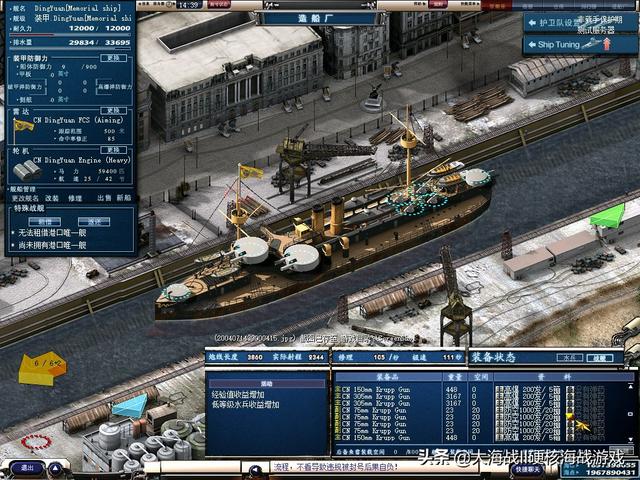
在上海K11艺术购物中心及北京中粮广场的改造项目赢得全球盛誉后,Kokaistudios再次将城市改造方面的专长带入国内日益受生活方式驱动的购物中心项目中。Kokaistudios近期完成了对上海世茂广场的改造,该项目是通过扩充空间功能和重新规划流线,让大体量商业建筑以新的面貌融入城市公共空间和市民的生活。
Text description provided by the architects. After winning global acclaim for both K11 in Shanghai, as well as Beijing's COFCO Plaza, Kokaistudios once again brings its expertise in shopping mall renovation to China’s increasingly lifestyle-driven retail scene. The firm's recent renovation of Shimao Festival City in Shanghai illustrates this contemporary crossroads, and demonstrates how by expanding malls’ functionality and reconsidering circulation, these sizeable structures can be reabsorbed by the city as useful public spaces of engagement and exchange.

正立面 摄影师:吴清山
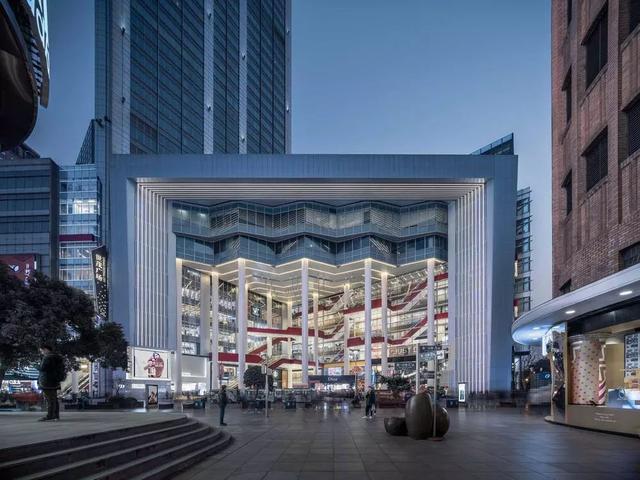
正立面夜景 摄影师:吴清山
世茂广场建于2006年,是上海的一座现代地标。包括零售,酒店和办公空间,位于上海著名的南京东路购物街端头,享有附近人民广场的景观。
Built in 2006, Shimao Festival City is a modern monument of Shanghai. Comprising retail, hotel and office space, it is located at the top of Shanghai’s famous East Nanjing Road shopping street, with views across nearby People’s Square. But despite its prime location the mall had fast become overlooked by residents in favor of venues more clearly aligned with their contemporary city lifestyle.

从西藏中路看世茂广场 摄影师:吴清山

从西藏中路看世茂广场 摄影师:吴清山
Kokaistudios的任务是改造世茂广场已有的零售空间。 通过重新梳理内外流线,根据顾客类型调整路径,并创造开放的空间,自2018年11月改造完成后,该广场重振了上海商业地产,同时重新连结城市生活并注入新活力,吸引市民和游客一探究竟。
Kokaistudios was tasked with upgrading the pre-existing retail component of Shimao Festival City. By reconfiguring circulation both inside and outside the facility, identifying clear pathways according to visitor type, and creating openness and space, since renovations concluded in November 2018, the mall has helped reinvigorate a prime corner of Shanghai real estate. In doing so, it has placed the mall firmly on the radar of both residents as well as tourists, reconnecting it to the city.

由南京东路看世茂广场

广场及入口 摄影师:吴清山
Kokaistudios的设计理念是一个剧院,改造三种不同类型的“角色”:游客,观众和演员,广场的区域被定义为前厅,礼堂和后台。 从外侧,一个“红毯”楼梯将南京东路上的游客送至世茂广场的三层平台及主入口。在这里,第二个楼梯则可引导顾客直达五层的包厢。
Kokaistudios’ design concept is a theater and the renovation centers on visitor flow of three “roles” of users: tourists, audience and actors, with areas of the mall imagined as the foyer, auditorium, and backstage of a theater. Starting from outside, an external ‘red carpet’ guides visitors along a sky escalator extendingfromNanjingDongLutoathirdfloor balcony and podium entrance space. From here, visitors may access a second external escalator, taking them to another covered balcony on the fifth floor.

一期、二期的两个入口 摄影师:吴清山

二期入口 摄影师:吴清山
游客:红毯主要是为了吸引游客走上体验之旅。“红毯”围绕着购物中心,可以欣赏到南京东路和人民广场的壮丽景色。其明示了建筑最初的愿景,致敬其沿对角线对称的平面布局。
同时为世茂广场增添了城市观光的功能,它不仅仅是一个购物场所,更是一处能让市民尽享上海多元城市生活的公共空间。
Tourists: Created primarily with tourists in mind, the red carpet guides visitors on an experiential journey. Effectively circumnavigating the mall proper, the “red carpet” offers impressive views across East Nanjing Road and People’s Square; they reinstate an original intention of the architecture itself, particularly with regard to its diagonal axis. It also sees the mall’s functionality expand to that of tourist attraction, reestablishing Shimao Festival City as a public space for enjoying all facets of Shanghai life - not just shopping.
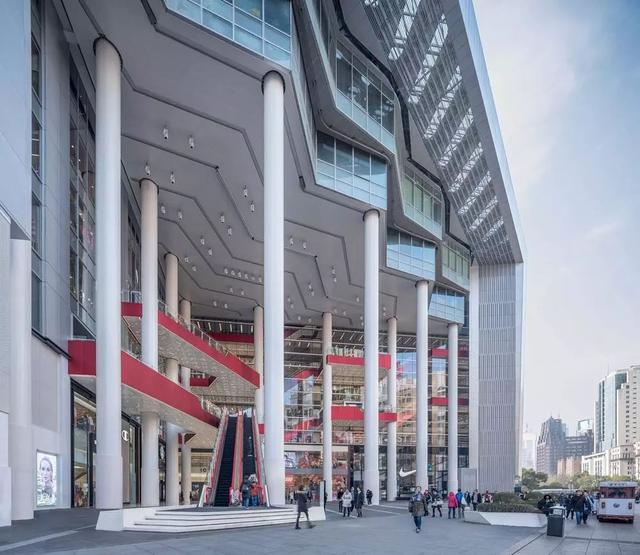
望向人民广场方向 摄影师:吴清山

广场夜景 摄影师:吴清山
除了柔化原先封闭的购物中心的周边环境,并将建筑与其周围环境重新连接之外,更将重点放在引向高层空间上。
改造前,仅能通过一层的旗舰店才能进入商场内部核心,而Kokaistudios的方案将能直接把游客送到三层剧场的“前厅”,为从前冷清的上层空间注入活力。
In addition to softening the perimeter of the formerly enclosed mall, and physically reconnecting the architecture to its environs, the intervention repositions the mall’s focal point to its upper levels. Where previously access to the mall's core was exclusively via its ground floor flagship stores, Kokaistudios’ solution transports visitors directly to its re-centred and newly opened-up third-floor ‘foyer’, bringing energy and movement to the facility’s formerly under-visited upper levels.

由广场看入口 摄影师:吴清山

由平台看广场 摄影师:吴清山
观众:将该项目定位为一个城市生活目的地,也是吸引另一类人群的关键——在这里被想象为“观众”的上海市民。因此,经过改造的购物中心在五、六层设有数家高端餐饮酒吧。
考虑到这一点,一个新建的首层入口通向一个吸引人的中庭:侧面有竖直的木栅板,延伸了空间的纵向尺度,其中并点缀着LED灯柱,使空间变得明亮,开放性和戏剧性。此处的电梯可直接将用餐者带到餐饮店,无需使用扶梯。
Audience: Positioning the mall as a lifestyle destination that extends beyond retail was also key to attracting a second target demographic: Shanghai residents, imagined here as ‘audience.’ For this reason, the renovatedmallfeaturesseveralhighend restaurants and bars on its fifth and sixth floors. With this in mind, anewlycreatedstreetlevel entrance opens onto an attractive atrium: flanked with vertical wooden boards, seemingly extending the entirety of the mall's height and interspersed with LED columns, it lends light, openness,anddramatowhatwaspreviouslyanunderoptimized space. From here, banks of elevators take diners directly to F&B outlets, without the need to navigate escalators.

飞天梯 摄影师:吴清山
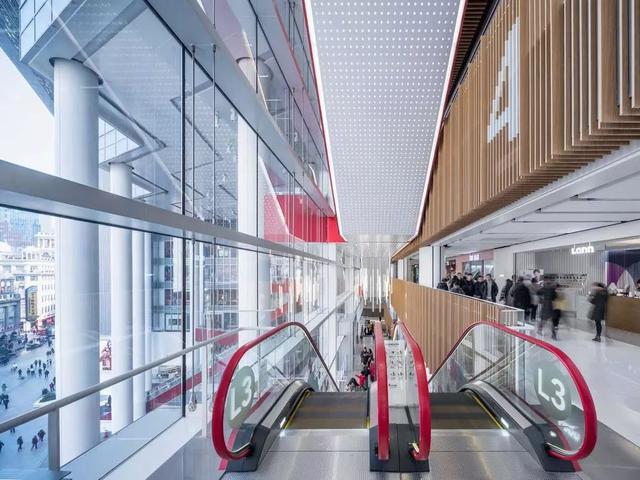
一期中庭 摄影师:吴清山
演员:南京东路上的另一个入口主服务第三种人群——附近办公人员,Kokaistudios将其定义为“演员”。 为了更频繁方便地到达世茂广场,一组电梯将直达商场核心。
它被设想为“后台”空间,以灰色百叶墙面和抛光的黑色玻璃打造出了经典色调。这些元素的相结合,加强了高效性与目的性,并与购物中心更以游客为导向的外部区域形成鲜明对比。
Actors: Another entrance on East Nanjing Road caters to a third demographic, defined by Kokaistudios as ‘actors’ and imagined as those working in nearby offices. In order to facilitate frequent, more convenient use of Shimao Festival City, an escalator conveys this group direct to the heart of the mall. Envisaged as a ‘backstage' space, it sets an industrial tone through grey louver walls, polished black glass. These elements combine to reinforce the space’s efficiency and purpose, and contrasts with the mall’s more tourist-oriented outer areas.

一期中庭 摄影师:吴清山

一期中庭 摄影师:吴清山
Kokaistudios的项目通过思考当今的城市生活并为未来发展预留可能性,来改造过时的购物中心使之更好地为城市服务。这些大型建筑可以被城市重新收回。就世茂广场而言,这个曾经被忽视的购物中心如今潇洒亮相,成为上海黄金地带让所有人受益共享的城市生活空间。
Kokaistudios’ project demonstrates how architectural renovation can serve cities by retrofitting outdated shopping malls with the lifestyle elements of now, and flexibility for the future. In this way, these large-scale structures can be absorbed back into the useful fabric of urban centers. In the case of Shimao Festival City, this translates to optimizing and opening-up a formerly overlooked space in the heart of Shanghai for the benefit, enjoyment and use of all.

一期中庭 摄影师:吴清山
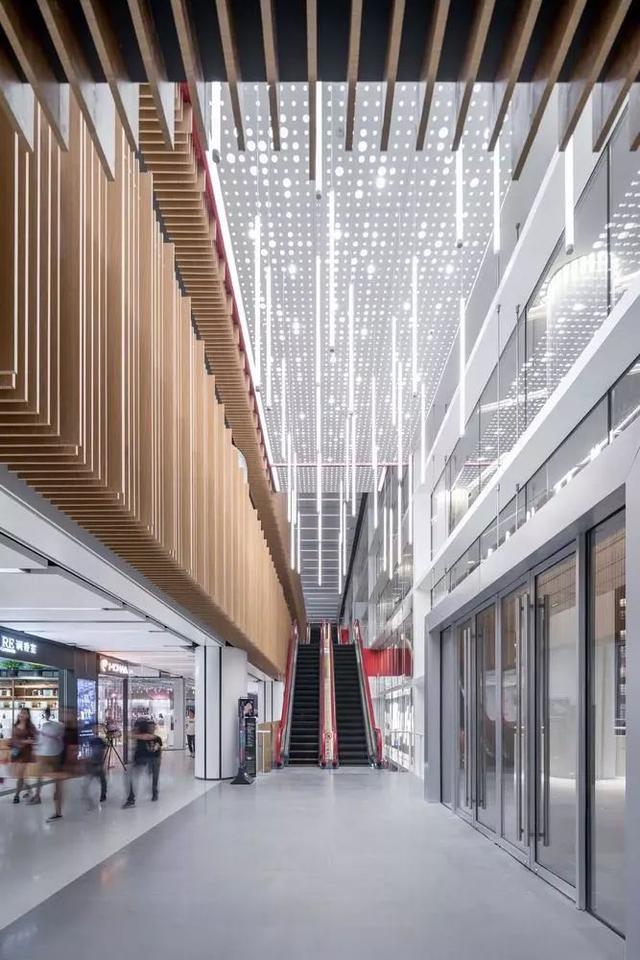
一期中庭 摄影师:吴清山

一期电梯厅小中庭 摄影师:吴清山
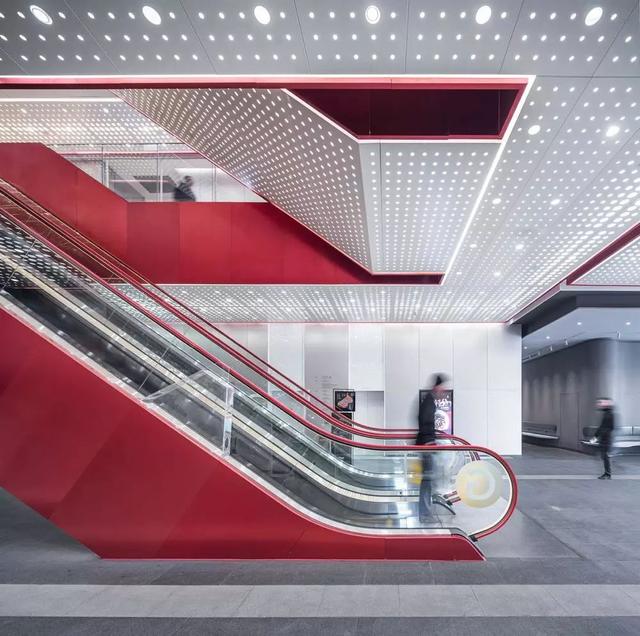
一期电梯厅小中庭 摄影师:吴清山

一期电梯厅小中庭

一期洗手间 摄影师:吴清山

二期公共空间 摄影师:吴清山

二期中庭 摄影师:吴清山

二期中庭 摄影师:吴清山

二期中庭 摄影师:吴清山

二期中庭 摄影师:吴清山

二期核心筒走道

一、二期连廊 摄影师:吴清山

三层平台及入口 摄影师:吴清山

从四层平台看南京东路 摄影师:吴清山

五层入口 摄影师:吴清山

五层平台视角 摄影师:吴清山
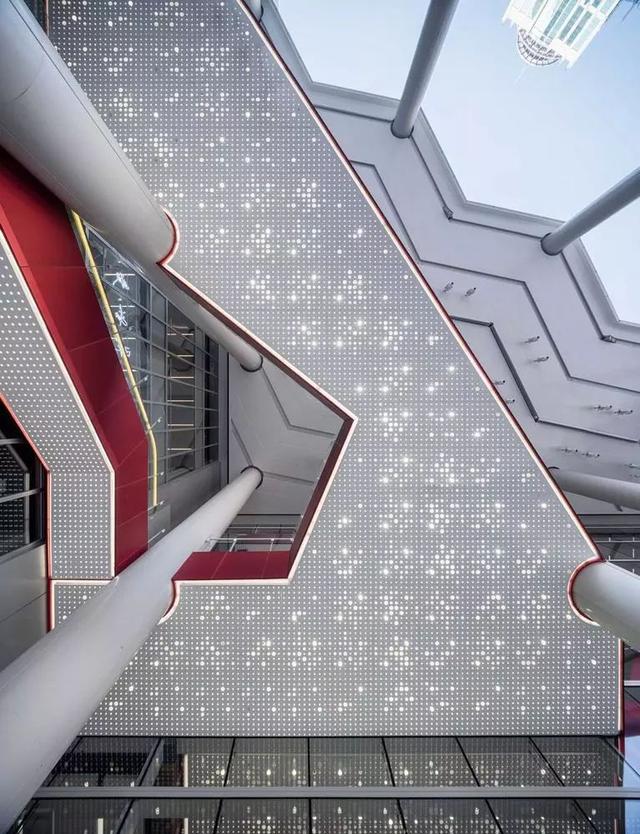
顶视 摄影师:吴清山

顶视 摄影师:吴清山

设计理念

一层平面图

三层平面图

五层平面图

东立面

北立面


剖面图


流线示意图
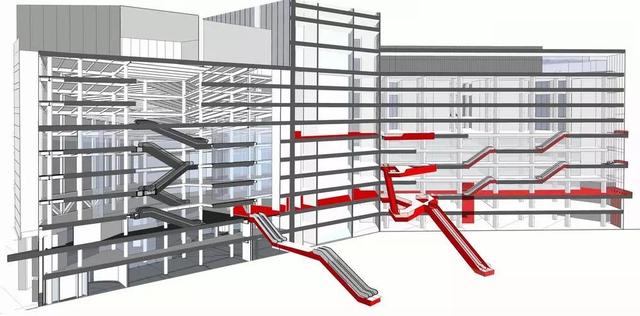
透视图
建筑师:Kokaistudios
地点:上海
首席设计师:Andrea Destefanis, Filippo Gabbiani
建筑设计总监:李伟
设计团队:李冬吟, Anna Maria Austerveil, Paz Taibo Eva Maria, 郑泳, 秦占涛, 关博华, 何文彬, Daniele Pepe
面积:58000平方米
年份:2018
摄影师:吴清山
室内设计总监:王思昀
室内设计团队:Kasia, 黄婉倩, 许馨洁
图文转自搜建筑,如涉侵权,请联系删除。
,




